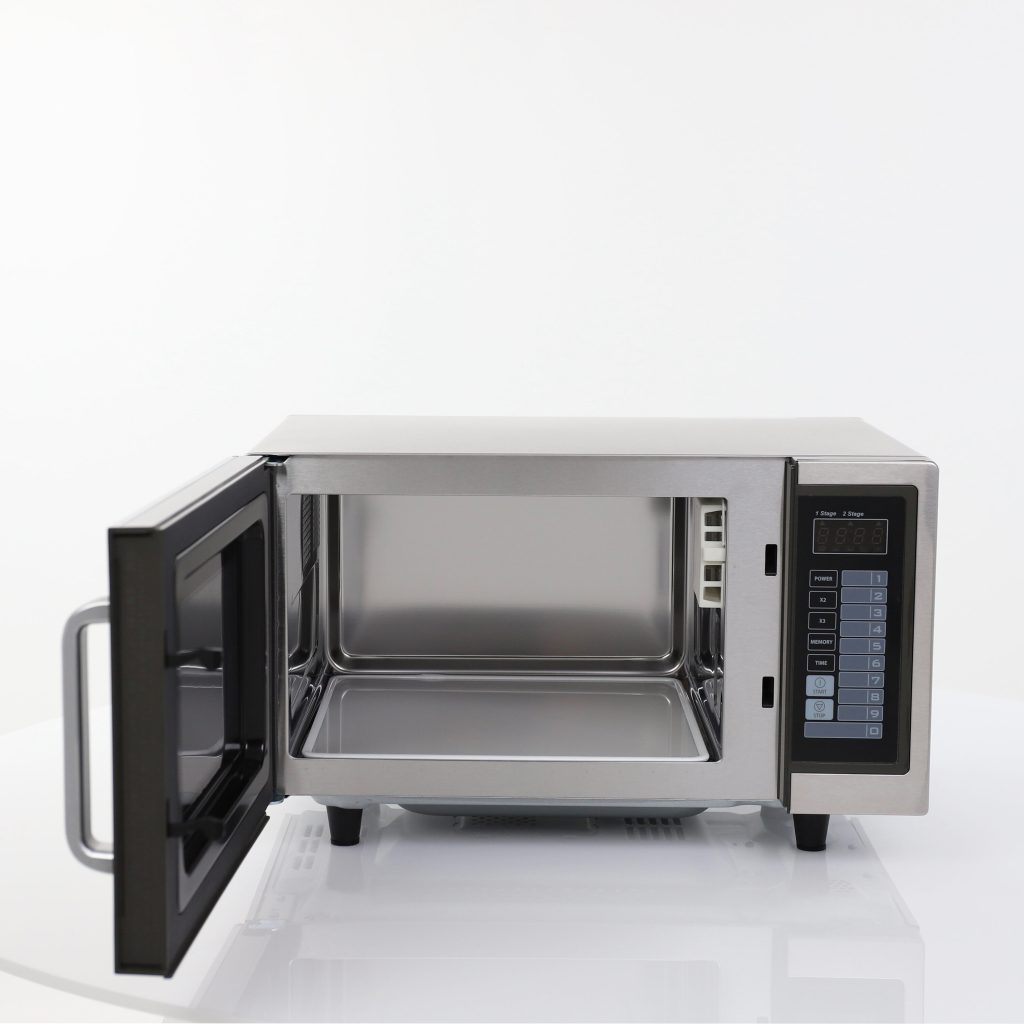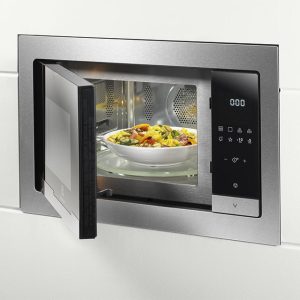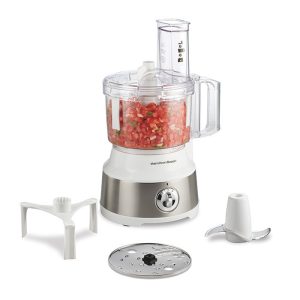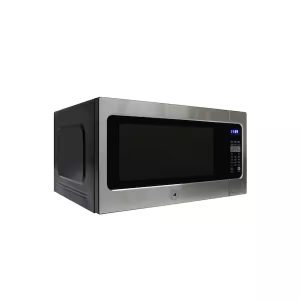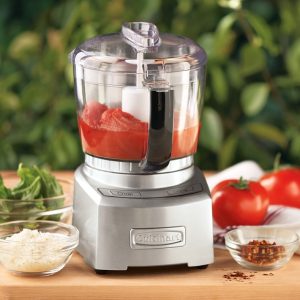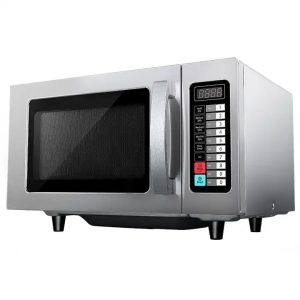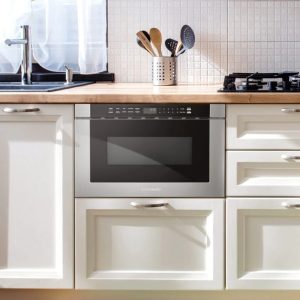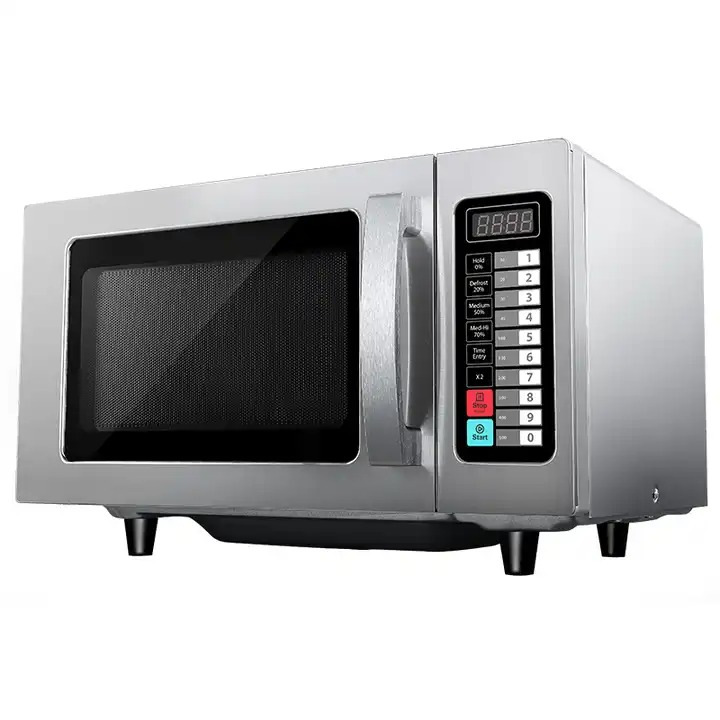
Benefits of Using a Commercial Microwave Oven
Choosing a commercial microwave oven can offer many advantages to your business. First, it saves time. When compared to traditional cooking methods, a commercial microwave oven heats food faster. This means quicker service for your customers. Second, it’s energy-efficient. Microwaves only heat the food, not the whole kitchen. You’ll see savings on your energy bills.
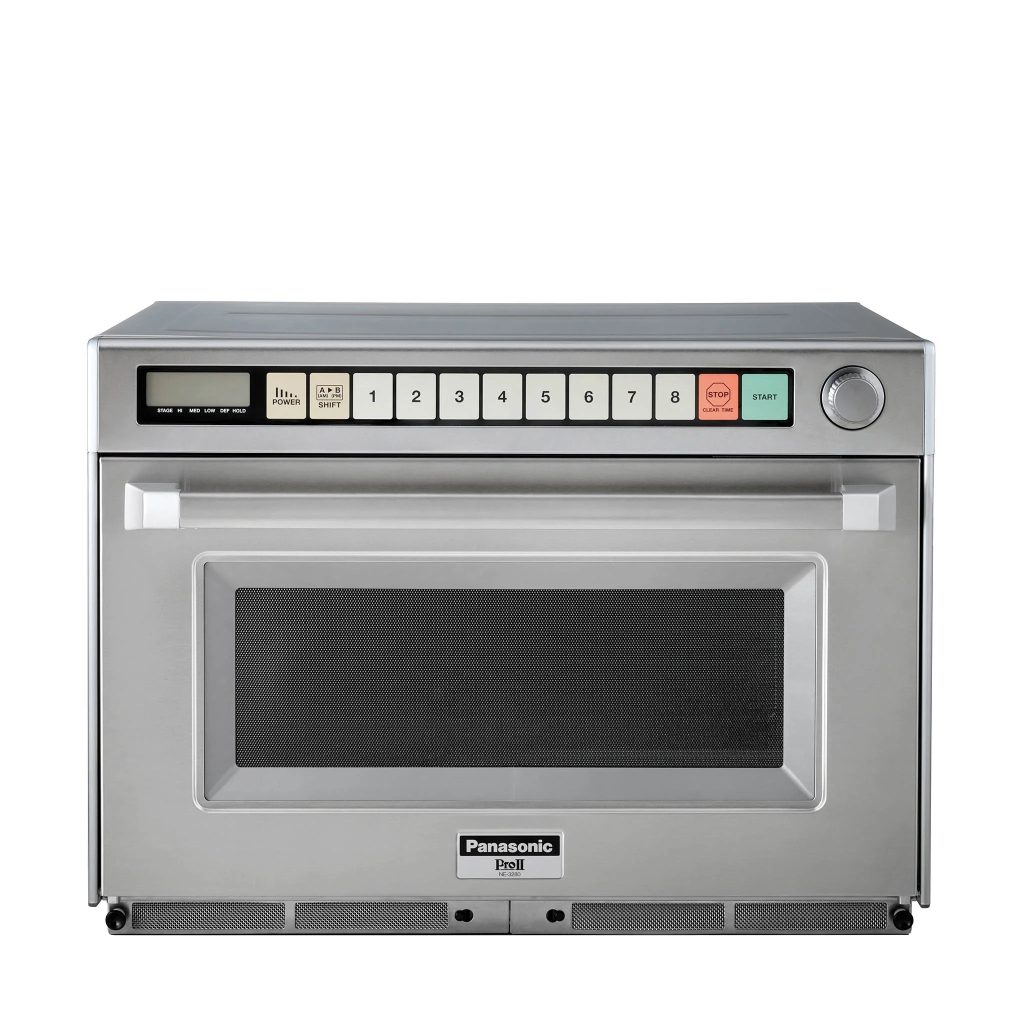
Key Features to Consider When Choosing a Commercial Microwave Oven
Selecting the ideal commercial microwave oven requires careful thought. Here are key features you should consider:
- Wattage and Power: Higher wattage equates to faster cooking times. Consider your volume of customers and choose accordingly.
- Size and Capacity: Make sure the oven fits your space and meets your output needs. Balance kitchen space with oven capacity.
- User Interface: Look for clear controls and simple operation. This ensures efficiency and ease of training staff.
- Build Quality: A sturdy construction withstands heavy use. Stainless steel interiors are durable and easy to clean.
- Programmable Settings: Presets can streamline cooking processes. This allows for consistent results with minimal effort.
Each feature plays a critical role in kitchen operations. Choose a commercial microwave oven that aligns with your business’s unique needs.
Understanding the Different Types of Commercial Microwave Ovens
Knowing the types of commercial microwave ovens can guide your purchase. There are various models designed for diverse business needs. Here’s a brief overview.
- Solo Microwave Ovens: These are basic models. They heat and defrost food but lack grilling or baking features. These work well for simple reheating tasks in small cafes.
- Grill Microwave Ovens: These ovens come with added grilling functions. They suit businesses that require light grilling along with microwaving. Fast food outlets often use these models.
- Combination Microwave Ovens: These are advanced models. They combine microwave energy, a grill, and convection heating (like a traditional oven) to cook food. They offer versatility and are perfect for kitchens that need to bake, roast, and grill.
- Heavy-Duty Microwave Ovens: Built for high volume and rigorous use, these can handle back-to-back cooking cycles. They fit well in busy restaurants and catering businesses.
When choosing, consider your menu. Think about the dishes you will prepare. Your choice should match the level of cooking complexity required by your business. For instance, a deli might opt for a solo oven, while a bistro may need a combination model. The right choice will help maintain efficiency and quality in your kitchen.
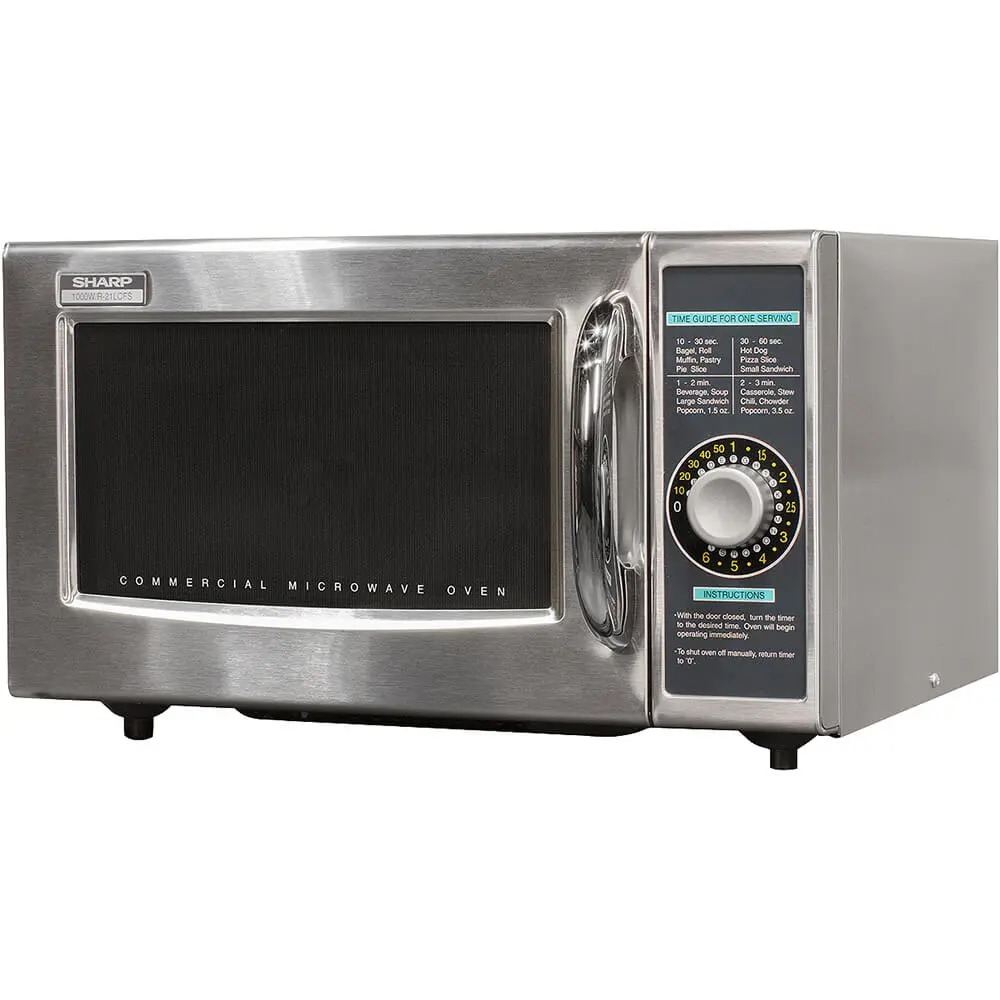
Assessing Wattage and Power Requirements for Your Kitchen
When exploring options for a commercial microwave oven, wattage and power are crucial to consider. In simple terms, more wattage means quicker cooking times. A higher-wattage unit can be a game changer in a busy kitchen, ensuring faster service. Here’s how you can assess the power needs for your kitchen.
- Estimate Your Demand: Think about how often you’ll use the microwave during peak hours. Frequent use demands a high-wattage oven.
- Understand Wattage Levels: Common commercial ovens range from 1000 to 2000 watts. Link this to the volume of food you’re heating.
- Balance with Energy Costs: Higher wattage also means higher energy use. Check your energy budget to find a suitable wattage level.
- Relate to Menu Items: Some dishes need more power to cook properly. If your menu includes such items, opt for a higher-wattage oven.
- Consider Efficiency: A high-wattage oven could cook food in less time. This reduces queues and pleases customers. Yet, it’s not just about power. The oven should use energy effectively.
- Check Oven Ratings: Choose an oven with a good performance rating. This ensures it cooks quickly without wasting energy.
Choosing the right wattage for your commercial microwave oven needs careful thought. Get the balance right to keep up with customer demand and manage costs efficiently. Remember, the goal is to select an oven that maximizes kitchen efficiency and offers speedy service without breaking the bank.
Size and Capacity: Matching the Oven to Your Business Needs
Selecting the right size and capacity for your commercial microwave oven is vital. Here’s how to match it with your business needs:
- Consider Kitchen Space: Start by measuring your kitchen area. A large oven can crowd small spaces. Choose a compact model to save room.
- Assess Your Output: How much food do you cook at once? Pick an oven that can handle your busiest times without delays.
- Think Long-Term: Your business may grow. An oven with extra capacity can adapt to increase in demand.
- Check Interior Dimensions: Larger plates need more space. Ensure the oven’s interior fits your largest dishes.
- Analyze Door Opening: A door that opens wide is important. It makes placing and removing dishes easier.
- Factor in Door Swing: If your kitchen has limited space, consider the door swing. Side-hinged doors may require less room.
By focusing on these factors, you select a commercial microwave oven that complements both your kitchen’s workflow and spatial constraints. This ensures efficiency and helps avoid any operational hiccups associated with a mismatched oven size or capacity.
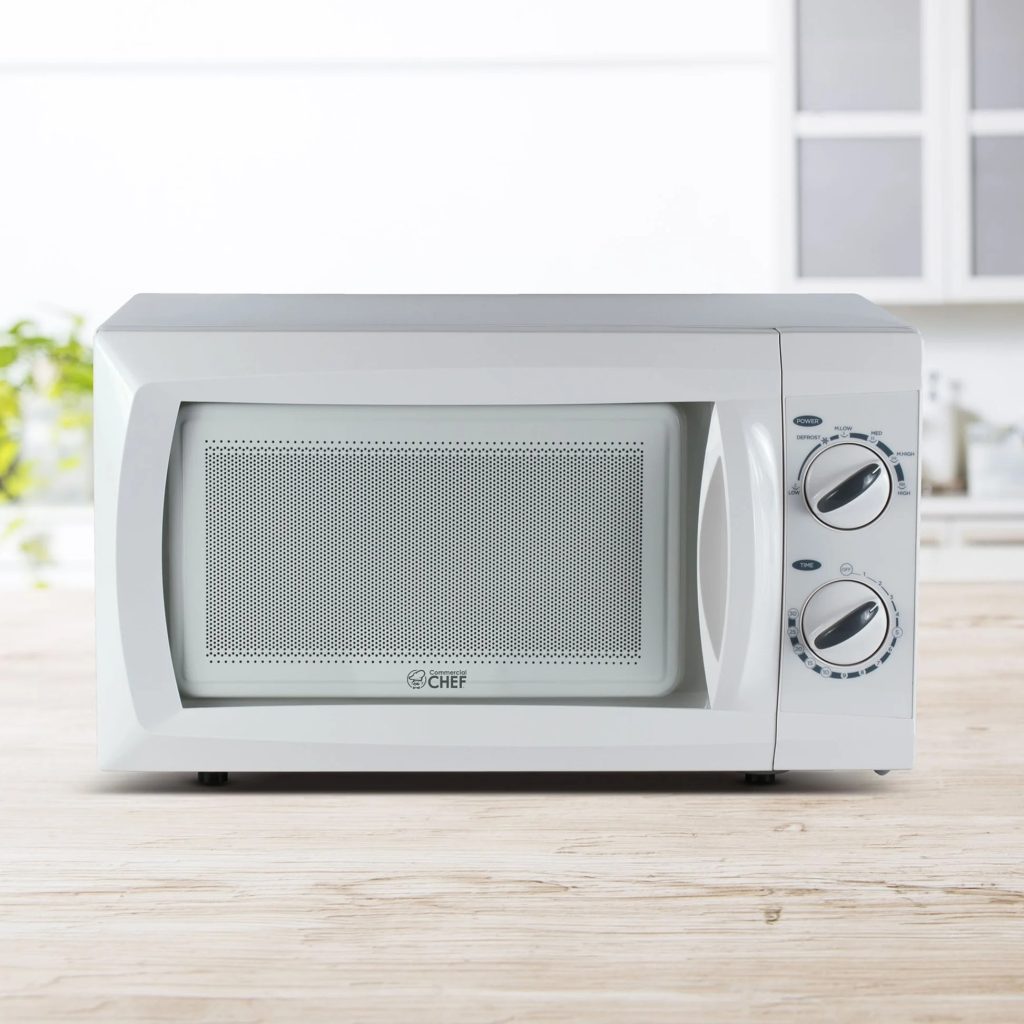
Ease of Use and Maintenance: What to Look for
When choosing a commercial microwave oven, ease of use and maintenance are key. These aspects can significantly impact the daily operations of your business. To ensure smooth functioning, here are things to consider:
- Simple Controls: Look for an oven with easy-to-use controls. Your staff should be able to operate it with minimal training.
- Ease of Cleaning: Select an oven with a design that makes cleaning quick and simple. Stainless steel interiors are usually best for this.
- Serviceability: Consider ovens that allow for easy access to parts. This aids in quick repairs if needed.
- Door Handle Design: Choose a model with a durable door handle. It should withstand frequent opening and closing.
- Removable Parts: Check if the oven has parts like trays or turntables that can be easily removed. This helps in thorough cleaning.
Selecting a commercial microwave oven that scores high on usability and easy maintenance will streamline your kitchen processes. It saves time, reduces staff training costs, and helps in serving customers faster. Make these factors a priority to keep your kitchen running effectively and efficiently.
Comparing Top Commercial Microwave Brands and Models
When it comes to choosing a commercial microwave oven, the brand and model matter. A reliable brand promises quality, durability, and service support. Here’s how you can compare the top brands and models to select the best one for your needs.
- Review Brand Reputation: Start by checking the reputation of the brands. Read user reviews and industry feedback. Brands with a good reputation usually offer consistent quality.
- Compare Features: Look at the features across different models. Focus on wattage, size, user interface, and programmability. Match these features with your kitchen’s requirements.
- Check Durability: Durable ovens withstand heavy use. Stainless steel interiors and sturdy doors are good signs. Compare the build of different models.
- Service and Support: A brand with reliable customer service saves headaches later. See which brands offer quick service and support in your area.
- Evaluate Prices: Compare prices between brands and models. Remember, the cheapest option may not be the best value.
- Read Warranty Terms: Understand the warranty terms for each brand. Longer or more comprehensive warranties might be better in the long run.
Choosing the right brand and model ensures you invest in an oven that meets your business’s specific needs. Weigh your options carefully to find a commercial microwave oven that enhances your kitchen’s efficiency.
Installation and Safety Guidelines for Commercial Microwave Ovens
Installing and using a commercial microwave oven safely is critical. To keep your kitchen safe and compliant, here are essential guidelines to follow.
- Choose the Right Location: Your microwave should be in a convenient spot. Keep it away from water and high-traffic areas to avoid accidents.
- Ensure Proper Ventilation: Microwaves need ventilation to avoid overheating. Place it where air can circulate well.
- Follow Manufacturer’s Instructions: Install the oven exactly as the manufacturer directs. This ensures safe and efficient operation.
- Use Dedicated Electrical Circuits: To prevent power overloads, connect your oven to its own circuit. This keeps your kitchen’s electrical system safe.
- Train Your Staff: Make sure all kitchen employees know how to use the microwave properly. Adequate training reduces the risk of injury and misuse.
- Regular Maintenance: Schedule regular maintenance checks. This helps catch and fix any safety issues early.
Following these guidelines helps maintain a safe kitchen environment. Proper installation and safety measures ensure the longevity of your commercial microwave oven. They also protect your staff and customers from potential harm.
